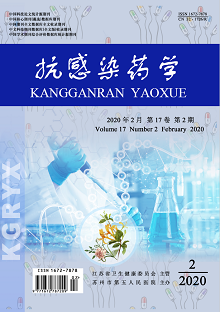ZHU Ai-guo, ZHANG Gui-fen, ZHI Wen-yu
Objective: To analyze the status of clinical usage of antimicrobial agents in a hospital, and to provide a reference for the rational medication of clinical antimicrobial agents. Methods: Data on the clinical usage of antibacterial drugs in a hospital from 2016 to 2018 were extracted to analyze the sales amount, drug use frequency (defined daily doses, DDDs), average daily cost (defined daily cost, DDC), composition ratio and any annual growth. Results: During the 3 years from 2016 to 2018, the total amount of Western medicine sold in hospitals was 335.947 1 million yuan, 321.421 3 million yuan and 296.928 4 million yuan, among which the amount of antibacterial drugs was 63.853 9 million yuan, 61.115 6 million yuan and 57.779 2 million yuan, accounting for 19.15% of the total amount of western medicine on average. The amount of antibacterial drugs decreased by 4.87% annually.The first and the second in the list of the amount of antibacterial drugs were the cephalosporins of the third and second generation.The first and second positions in DDDs were macrolides and the third generation cephalosporins.The sales amount of unrestricted and restricted use grade antibiotics were 17.14% and 70.03%, respectively, and the DDDs component ratio was 59.44% and 38.44%, respectively.The sales amount and DDDs of special use antibiotics decreased obviously.The sales volume of oral and injection dosage forms of antibiotics accounted for about 20% and 80%, with 69% and 31% of DDDs, respectively. The TOP 3 sales values of a single variety were cefotiam, cefatiamidine, piperacillin sodium-tazobactam sodium and cefoperazone sodium sulbactam sodium; The TOP 3 DDDs varieties were clarithromycin, cefoxime and cefadroxil. Conclusion: The clinical usage of antimicrobial drugs in the hospitals is relatively standardized and reasonable, but the standardized management of antimicrobial drugs is a long way to go, which should be persistent and make continuous improvement.
